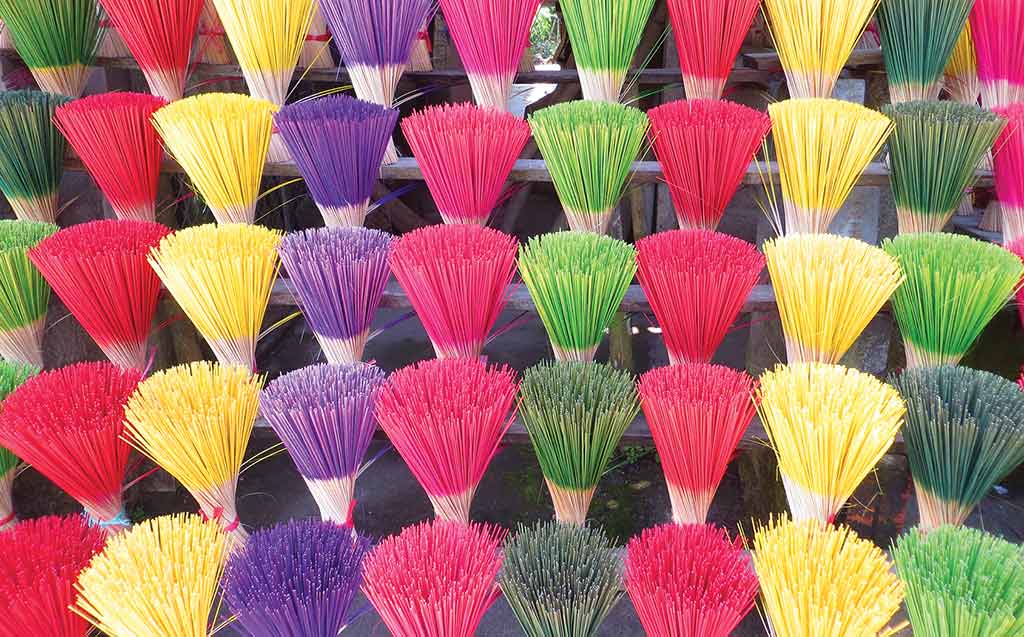Vietnam’s approach to death is different than that of the Western world. Regardless of religion, Vietnamese believe in ancestor worship. These include grandparents as well as collective national ancestors like Ho Chi Minh or Tran Hung Dao.
When a Vietnamese person passes away, it is believed that one’s life does not end but that the afterlife begins. The afterlife requires basic necessities, such as food, clothing, and money, all of which a family must provide for its deceased loved ones. In most homes, shops, and businesses, you’ll find a small altar where local residents put food, beverages, and occasionally cigarettes for the dead. These offerings are often accompanied by prayers and incense.
On holidays and certain Buddhist festivals, Vietnamese burn paper money and clothing for their ancestors to use in the afterlife. While it’s bad luck for the living to keep these items, you’ll likely spot stray hundred dollar bills on the sidewalk or in the streets. Though they’re flimsier than the actual currency, these paper notes are surprisingly accurate—until you turn them over to find the phrase “Bank of the Dead” instead of “In God We Trust.”

Colorful incense, used at pagodas, temples, and family altars. Photo © Dana Filek-Gibson.
In most homes, shops, and businesses, you’ll find a small altar where local residents put food, beverages, and occasionally cigarettes for the dead.Beyond these ongoing rituals, Vietnamese funerals are a multi-day affair meant to usher a loved one into the afterlife. When a Vietnamese person dies, his or her family will mourn for several days, inviting friends and family as well as a religious leader to say goodbye. Mourners often wear white headbands. The funeral, held at home, usually includes a large tent set up in front of the building for guests to visit. An altar, complete with offerings and portrait of the deceased, is set up inside. At the end of the mourning period, the body is placed in a coffin and carried to its final resting place in a large, truck-like hearse, usually decorated with colorful symbols; some Vietnamese are cremated. This final procession begins before sunrise, sometimes as early as 4am or 5am, and often involves music. Don’t be surprised if you wake up in the wee hours of the morning to trumpets and crashing cymbals—this is simply someone on their way to the afterlife.Once the funeral is complete, Vietnamese carry on providing the essentials for their ancestors through offerings. The day of a person’s death, rather than his or her birth, is remembered and celebrated as a holiday. This occasion, called dam gio, is a family event, in which members of that particular house come together and give offerings to their deceased relative, visit with family and friends, and often make trips to the local pagoda or church to commemorate the individual. Contrary to Western ideas of death, dam gio is not a somber occasion but rather a celebration of that individual and his or her life.
Excerpted from the First Edition of Moon Vietnam.